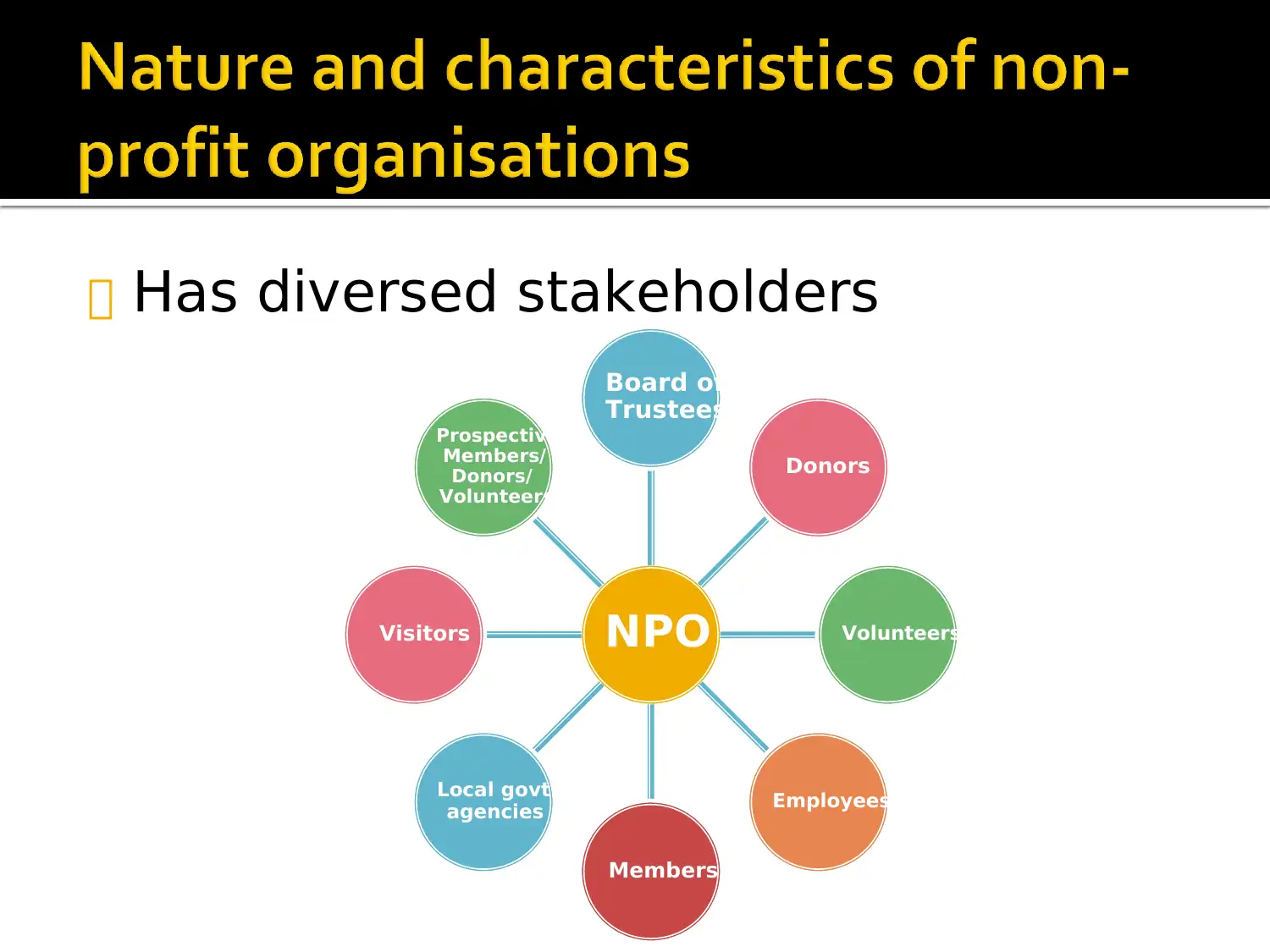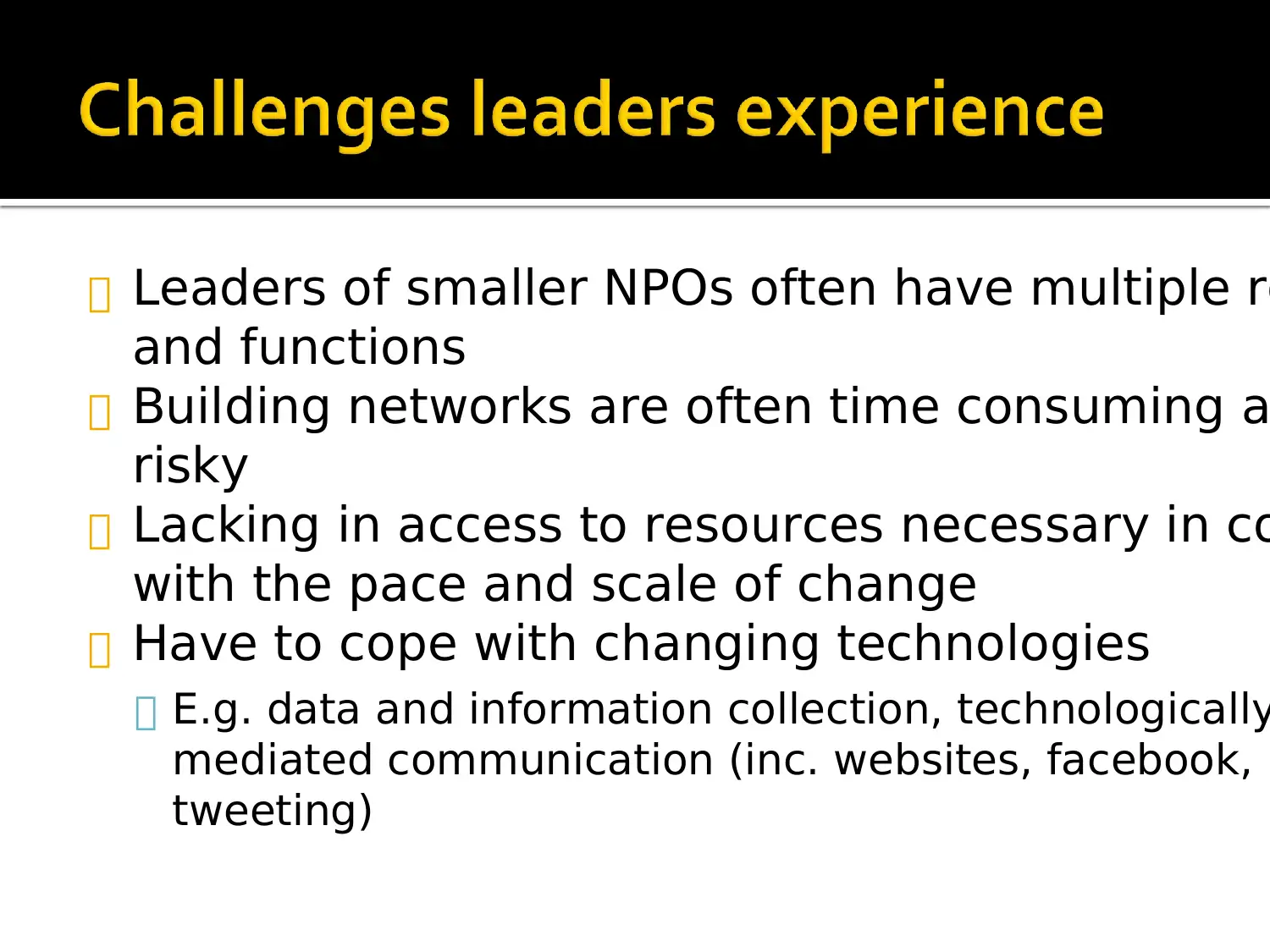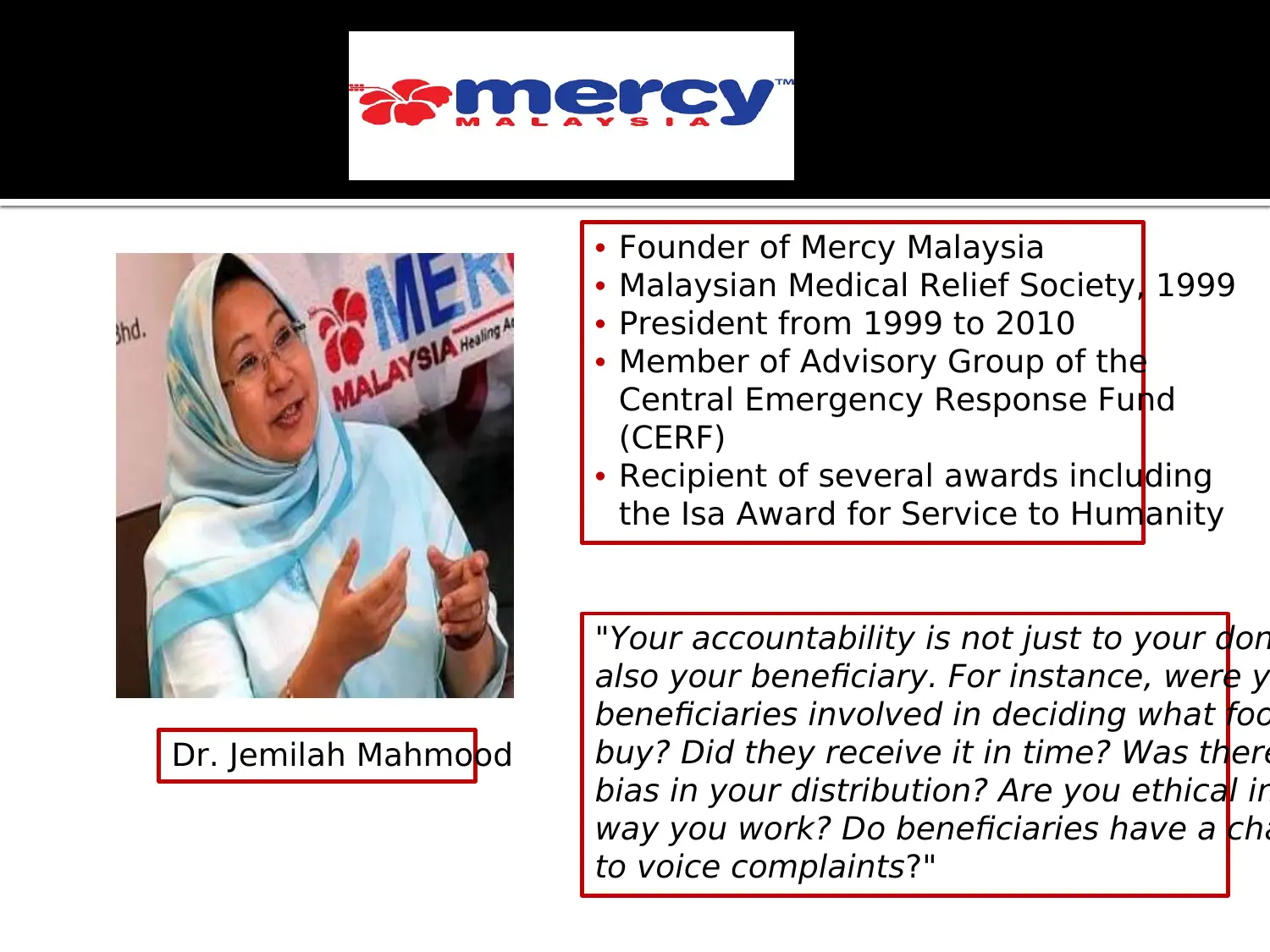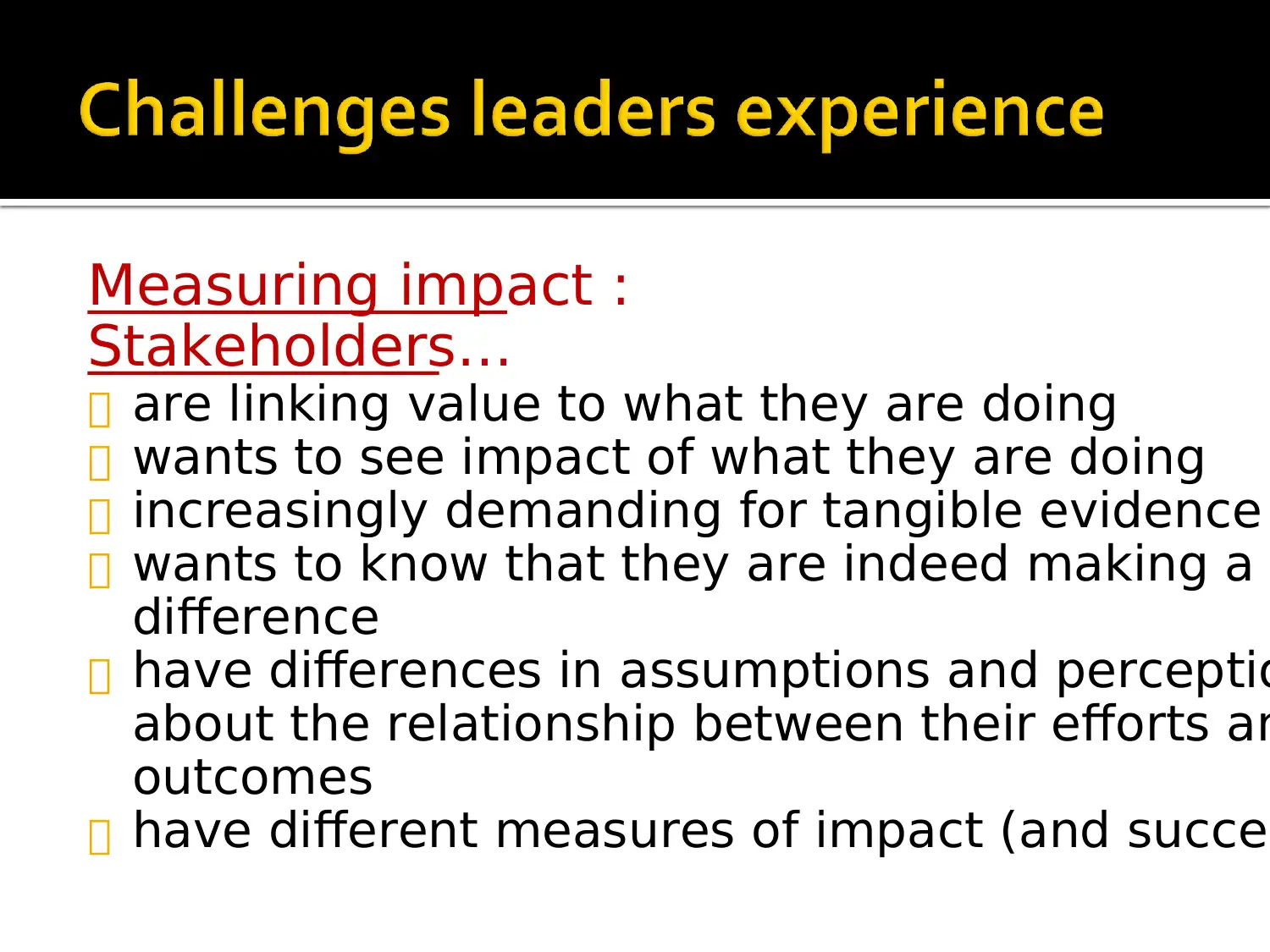Leadership Challenges and Skills in Non-profit Organizations Report
VerifiedAdded on 2021/05/31
|26
|1641
|50
Report
AI Summary
This report provides a detailed examination of leadership within non-profit organizations (NPOs). It begins by discussing the nature and characteristics of NPOs, emphasizing their mission-driven focus, diverse stakeholders, and the complex environments in which they operate. The report then delves into the challenges leaders face, including resource constraints, competition, stakeholder management, and the need for effective impact measurement. It also highlights key human resource issues such as motivation, pay satisfaction, and volunteer management. The report further identifies the abilities and competencies crucial for effective NPO leadership, including ethical and values-based decision-making, board and committee development, financial management, community outreach, diversity awareness, risk management, fundraising, program planning, volunteer management, and information technology skills. The report emphasizes the importance of balancing structure and flexibility, leading paid and unpaid staff, and adapting to changing expectations to ensure the NPO's success. The report also provides case studies of leaders in the field such as Dr. Jemilah Mahmood and Anita Ahmad. This report is valuable for those seeking to understand the multifaceted aspects of leading and managing in the non-profit sector.
1 out of 26














![[object Object]](/_next/static/media/star-bottom.7253800d.svg)